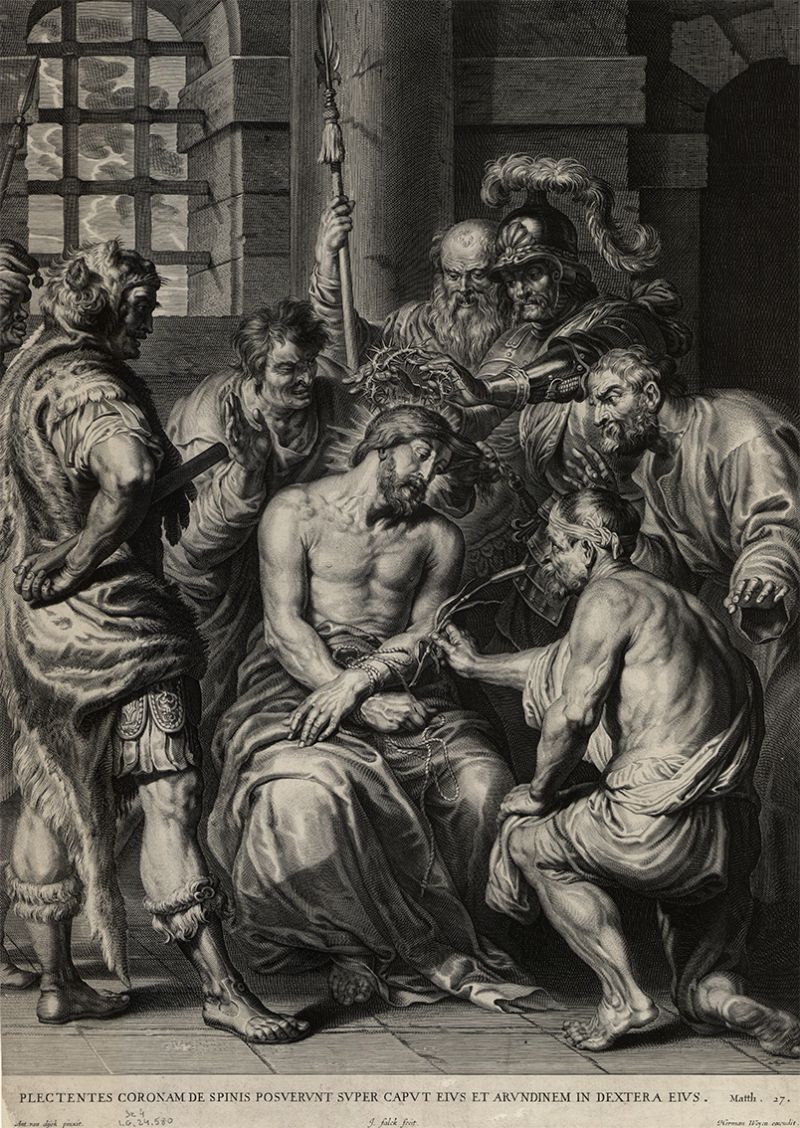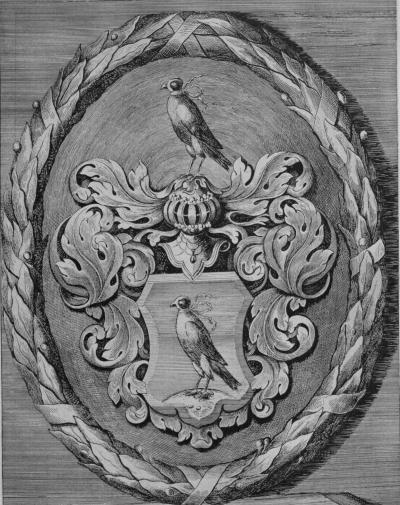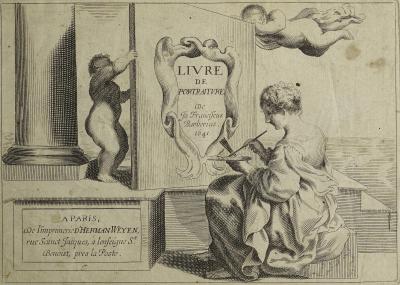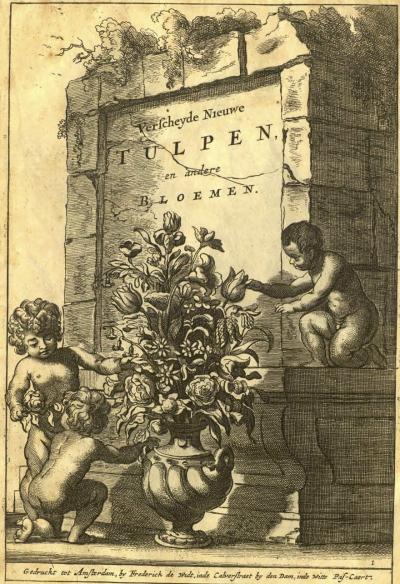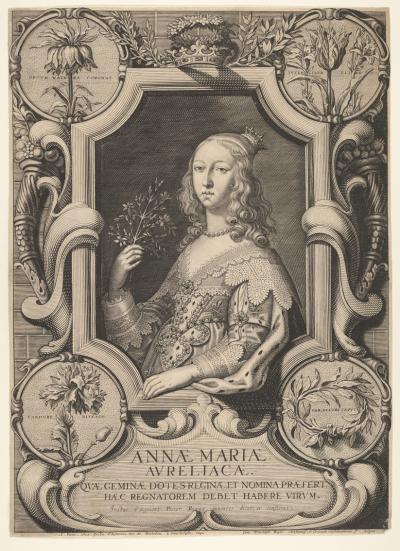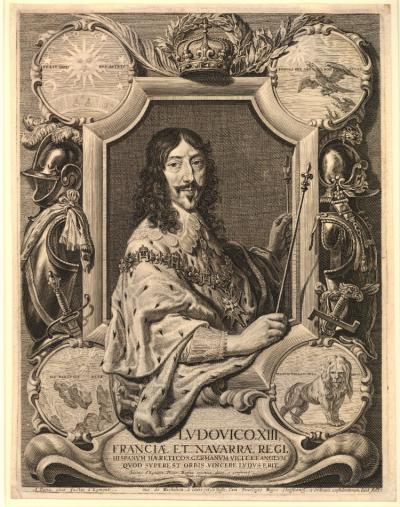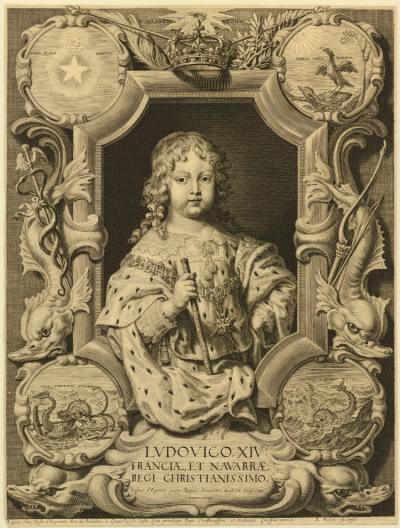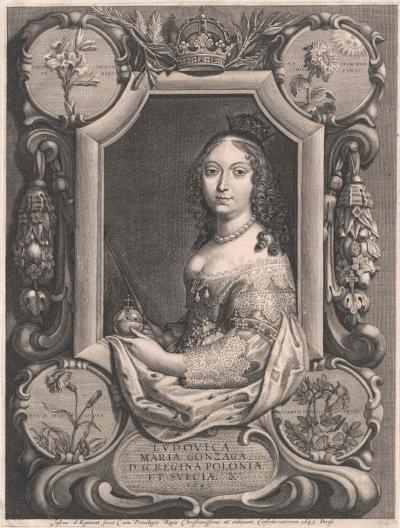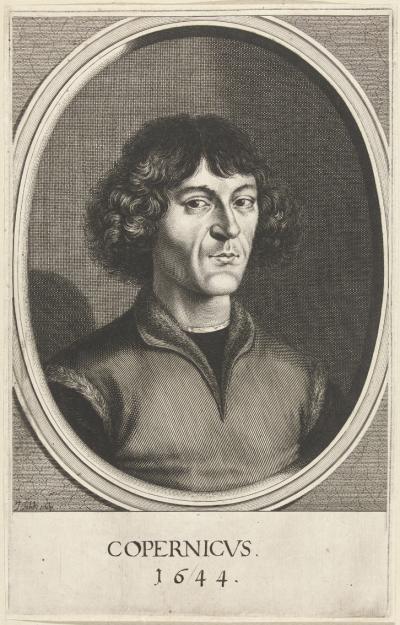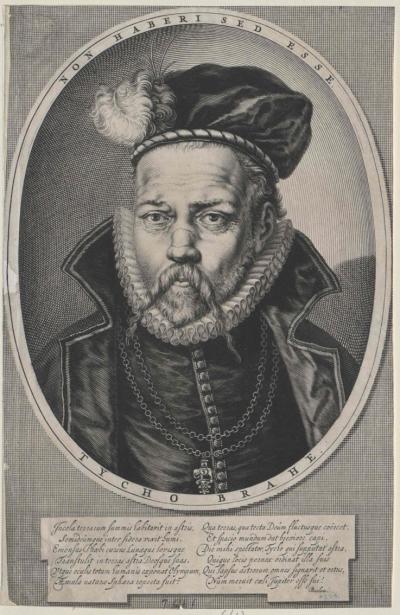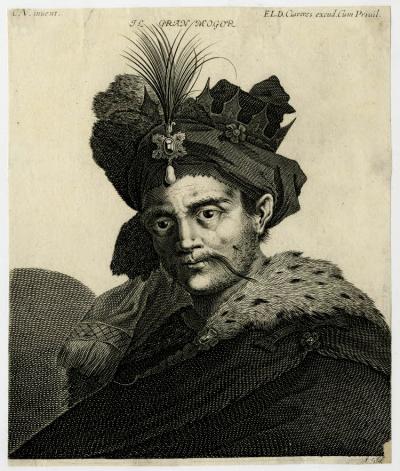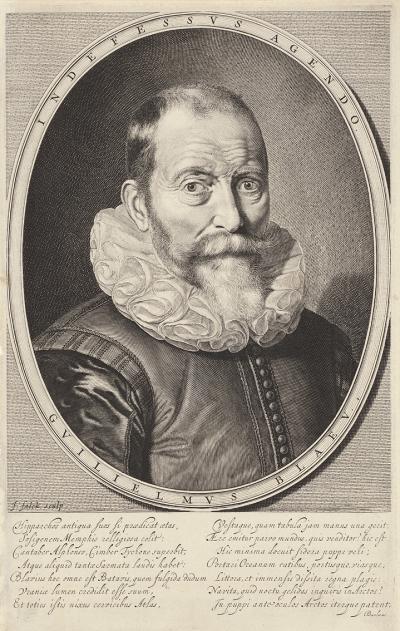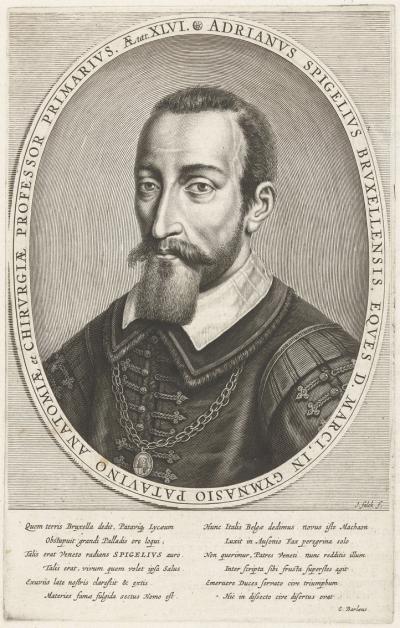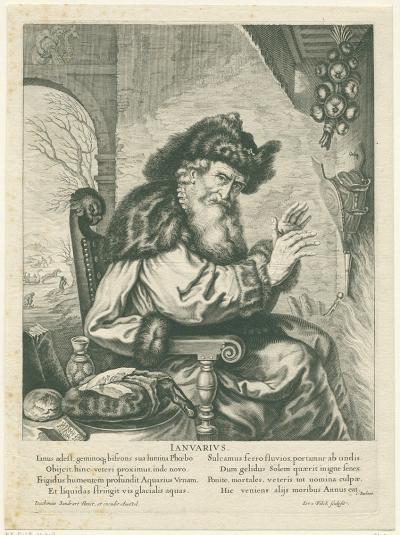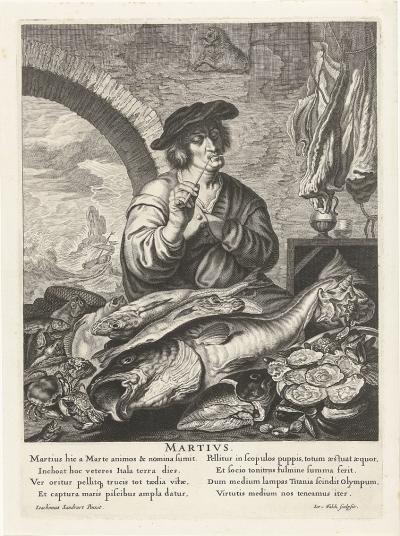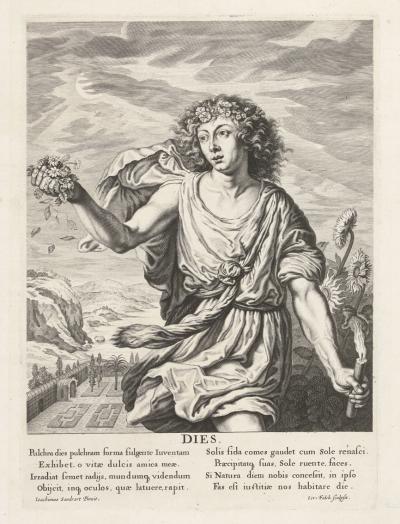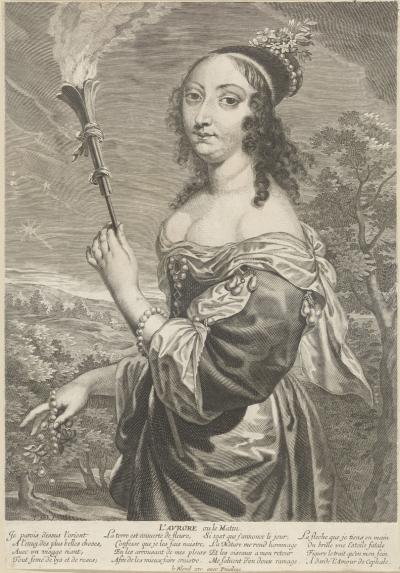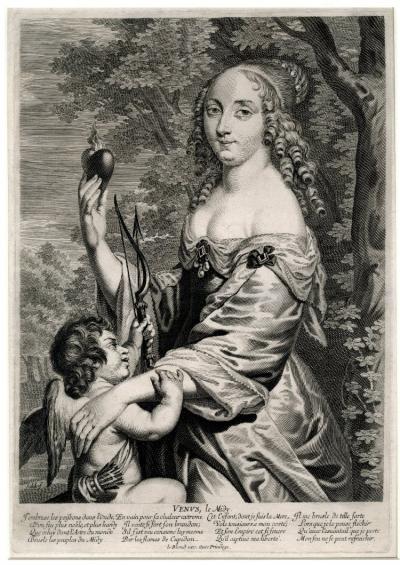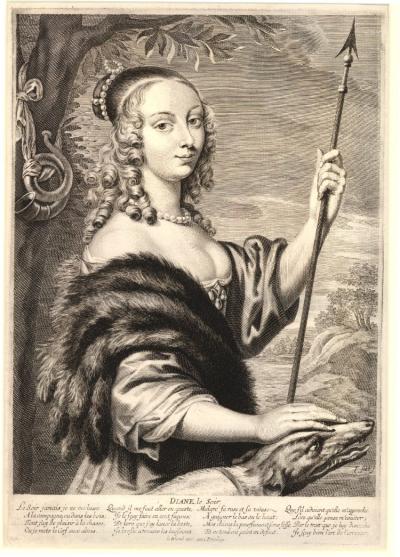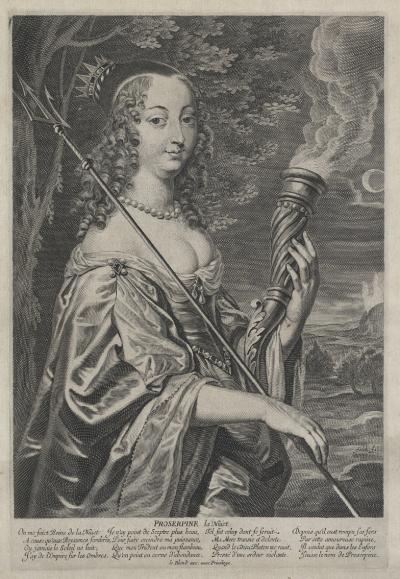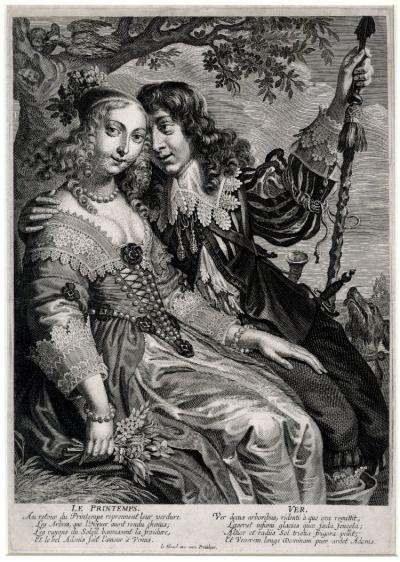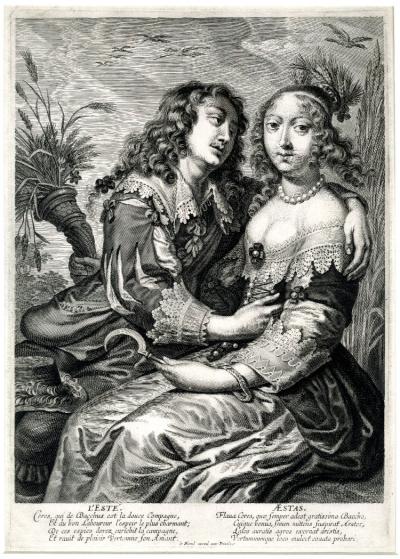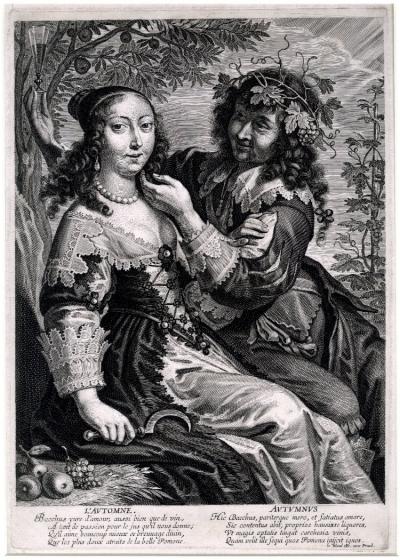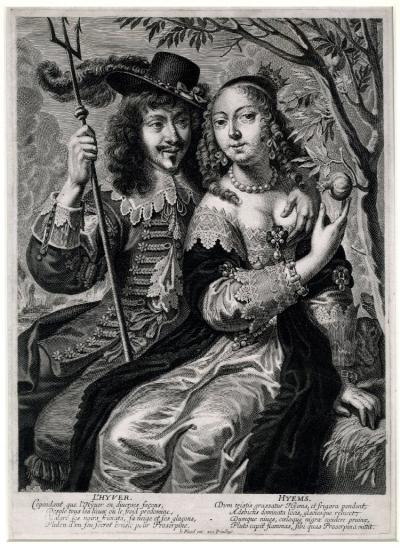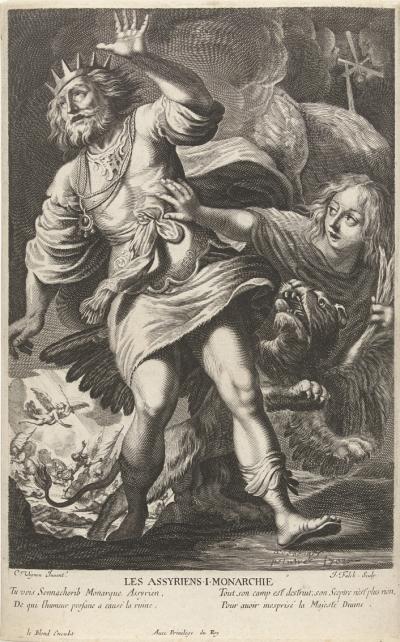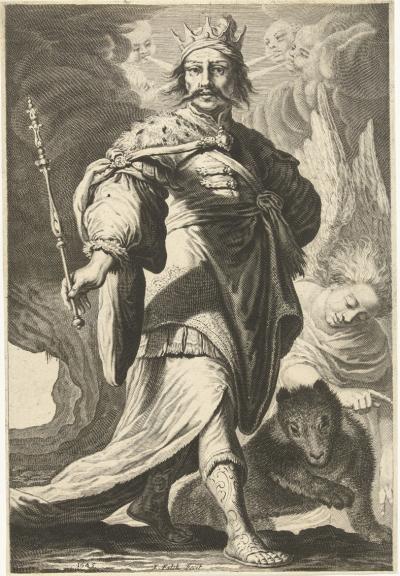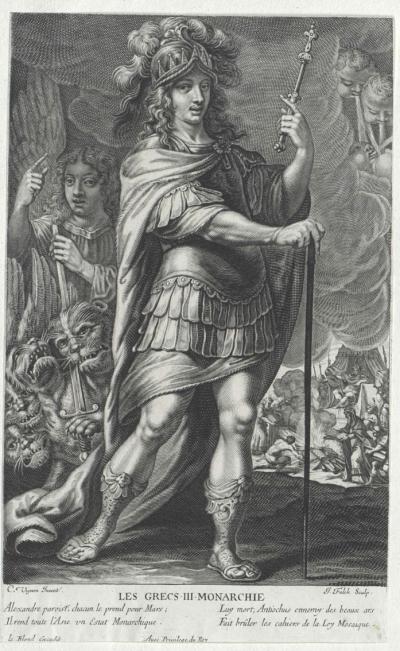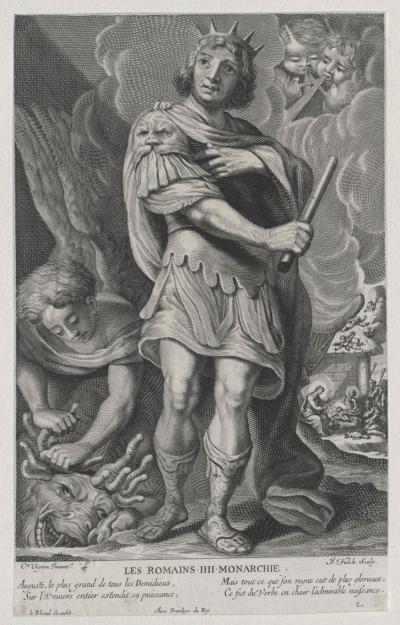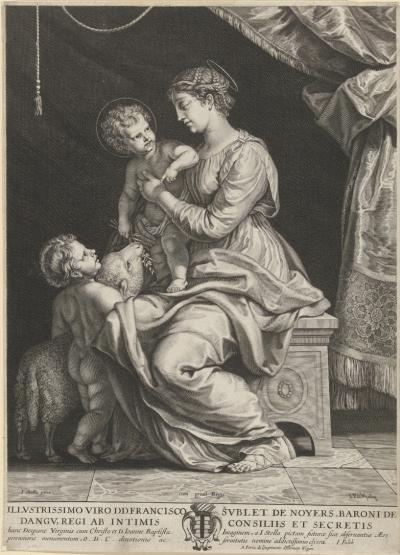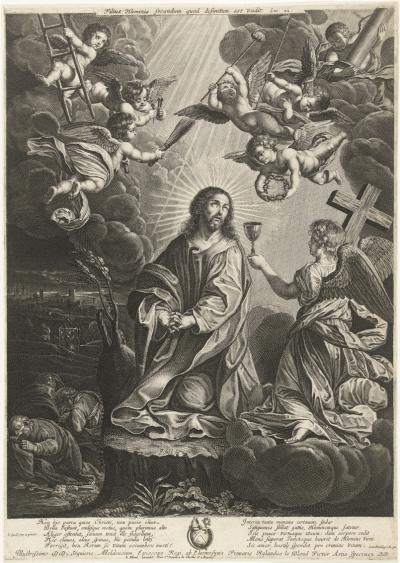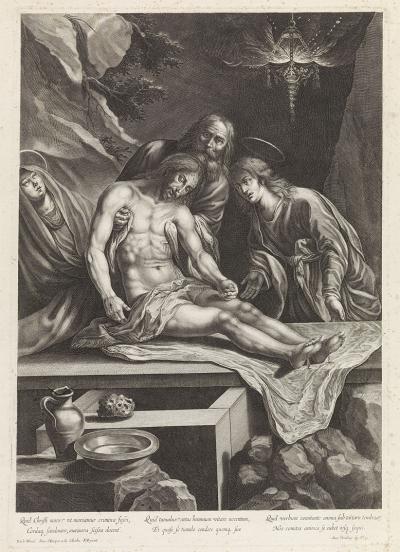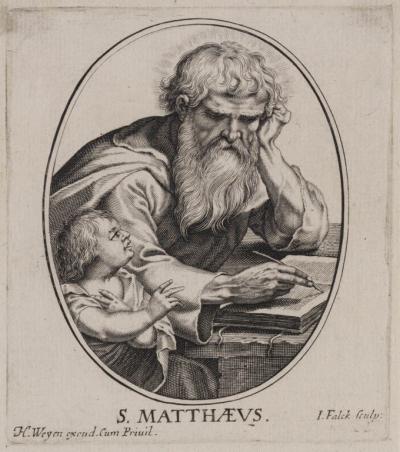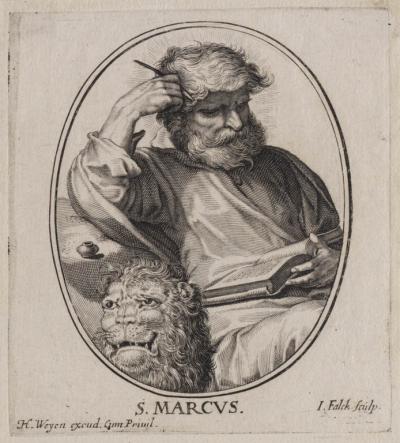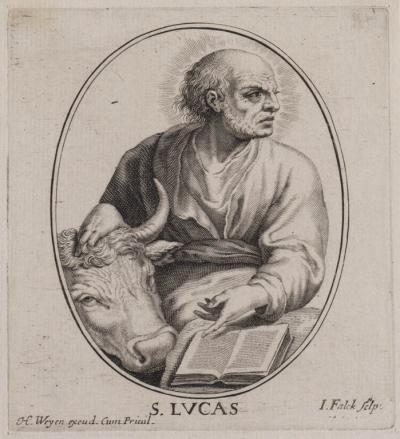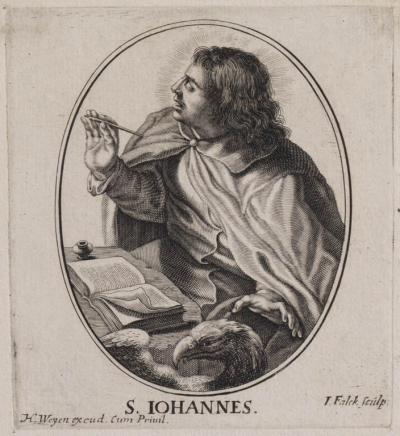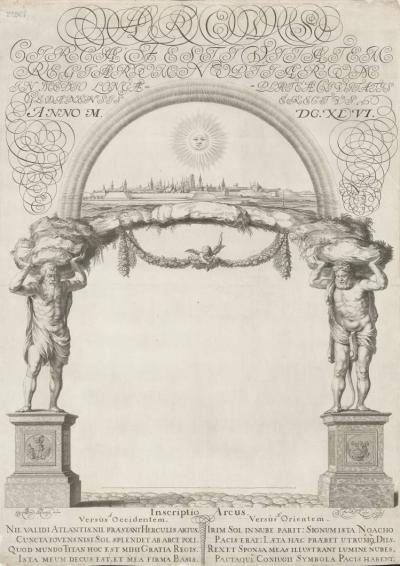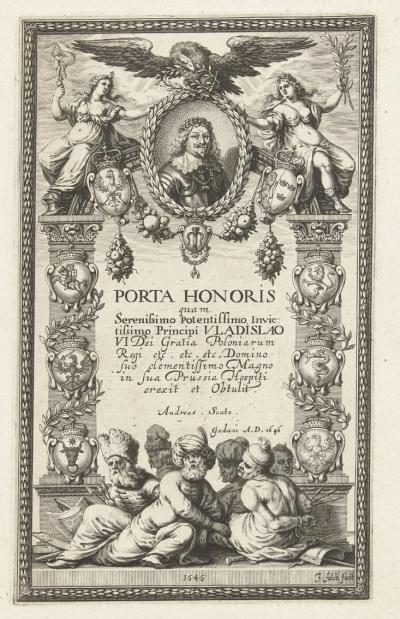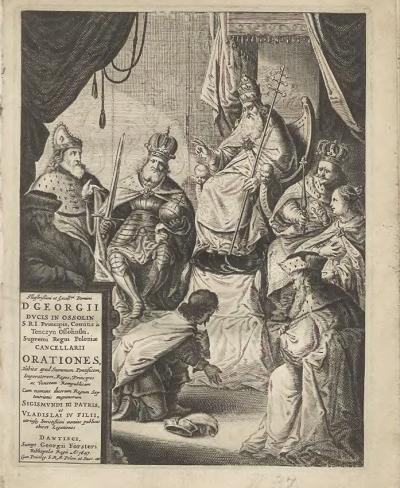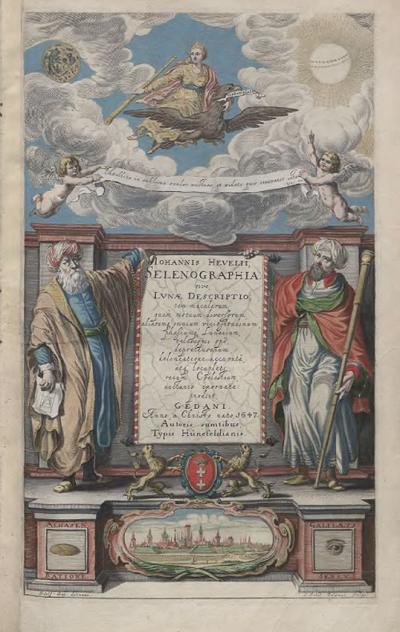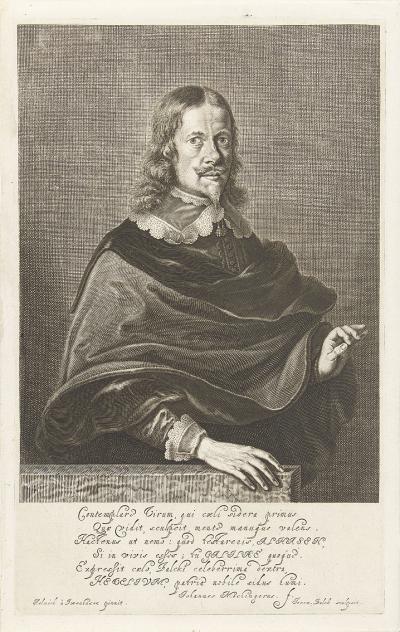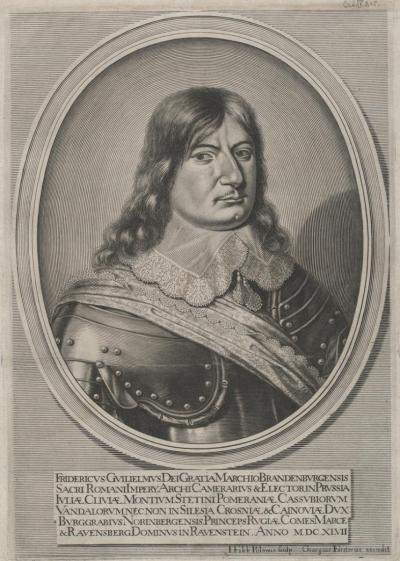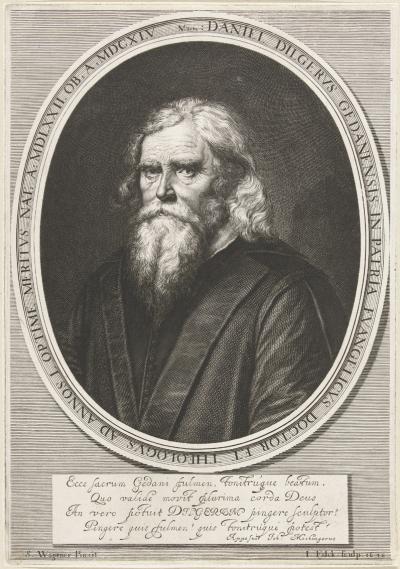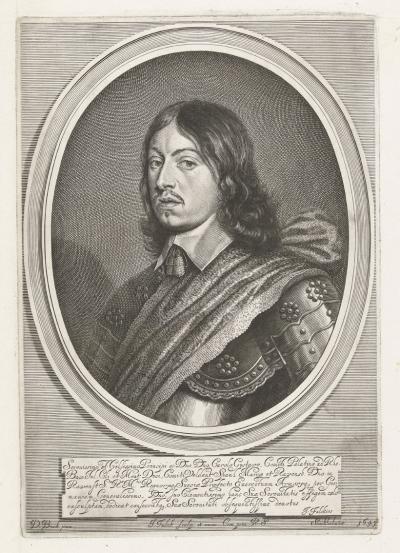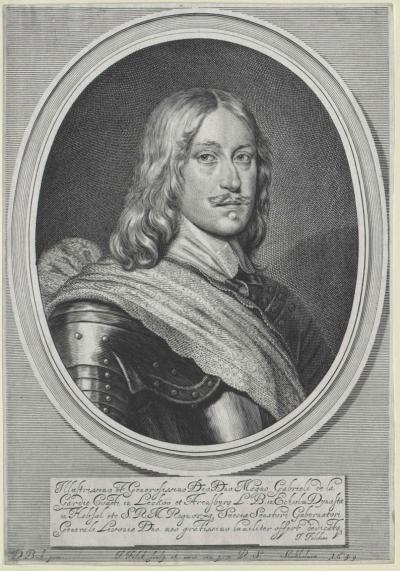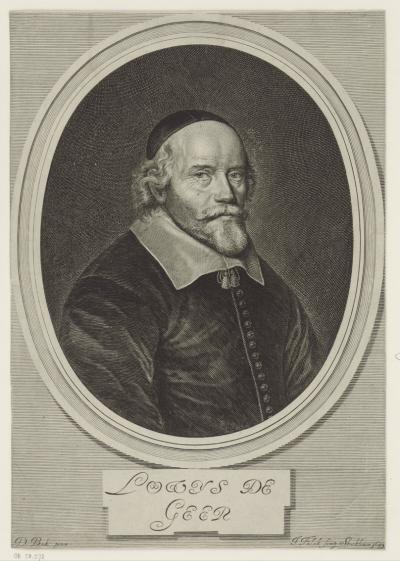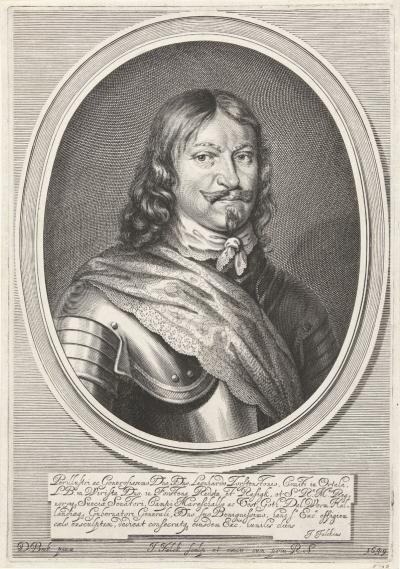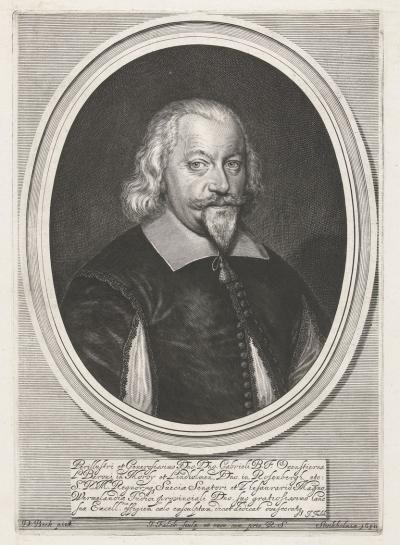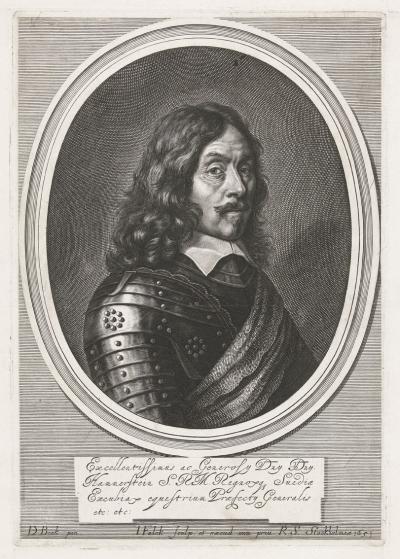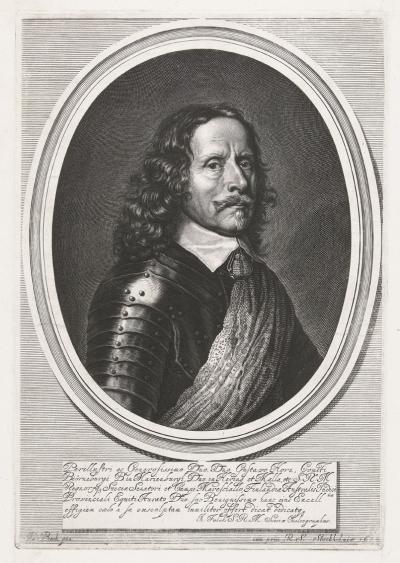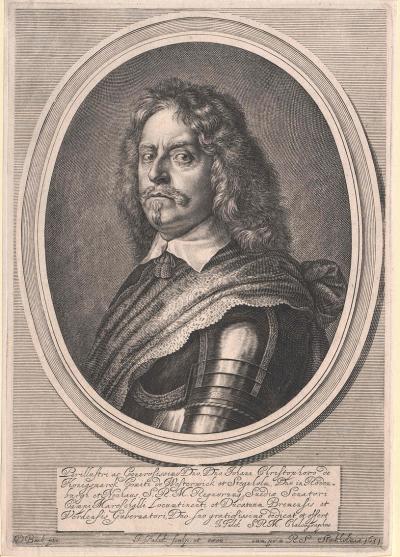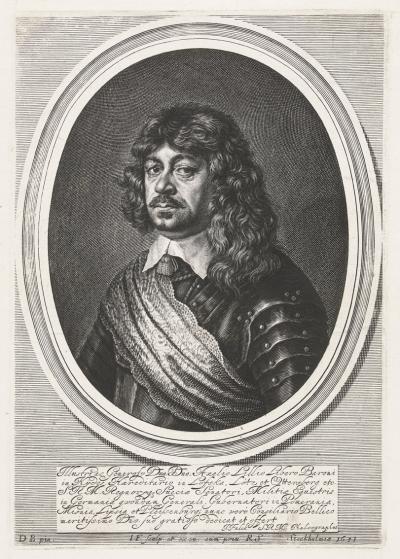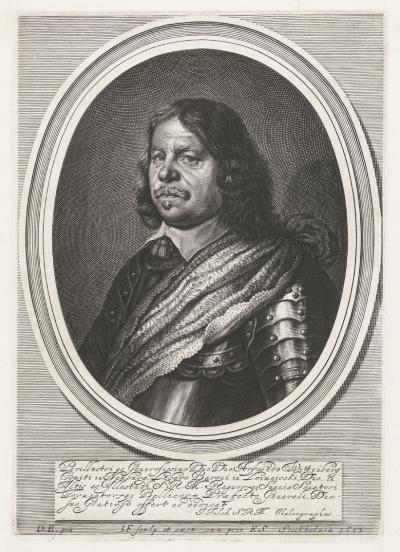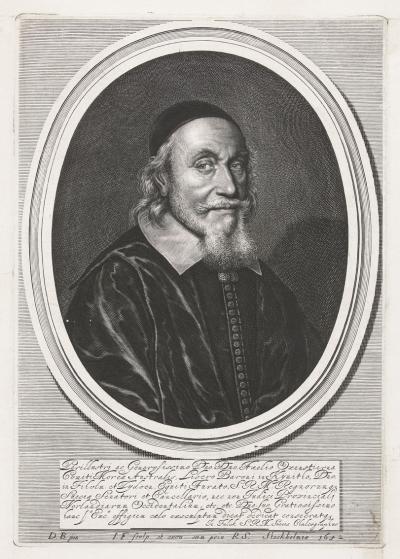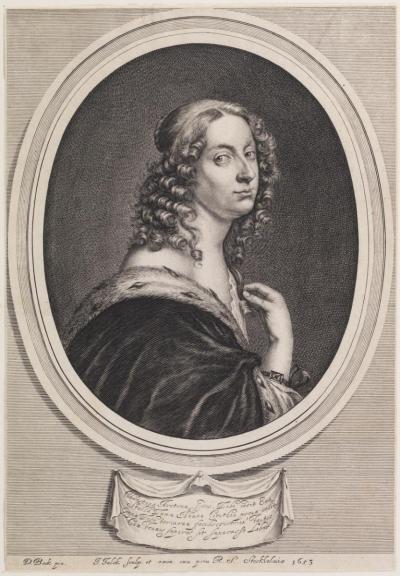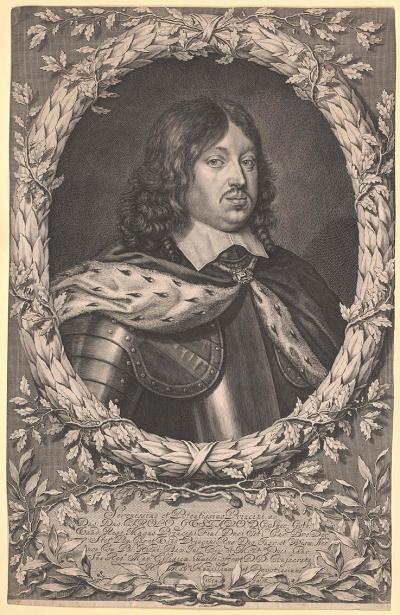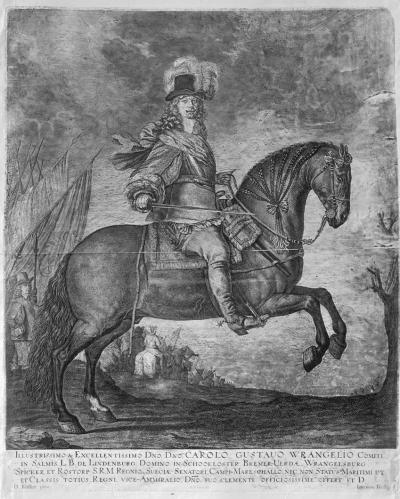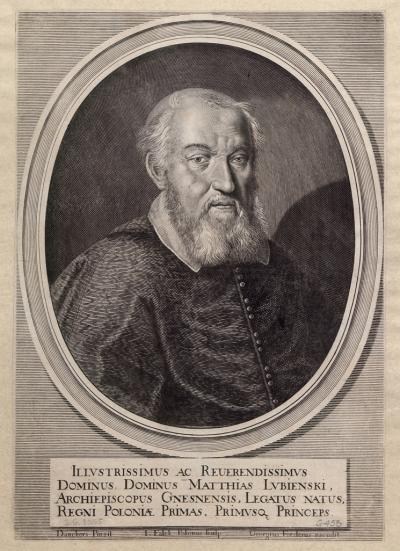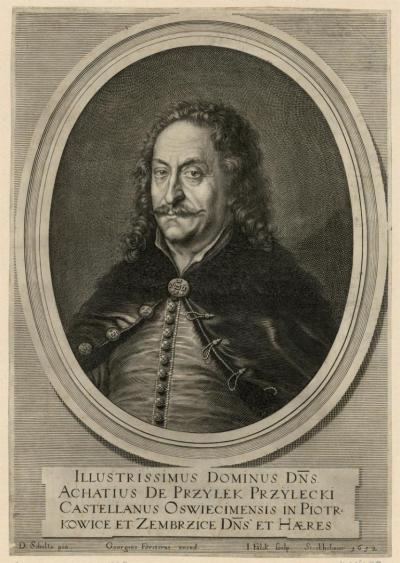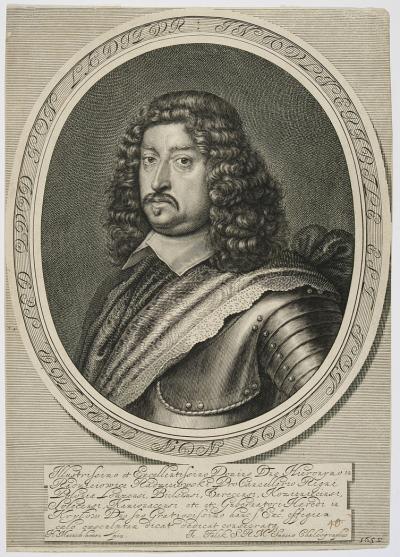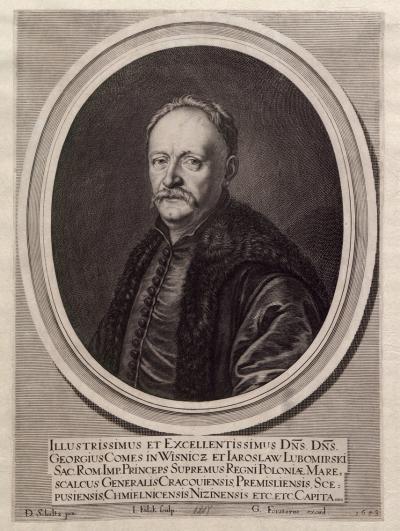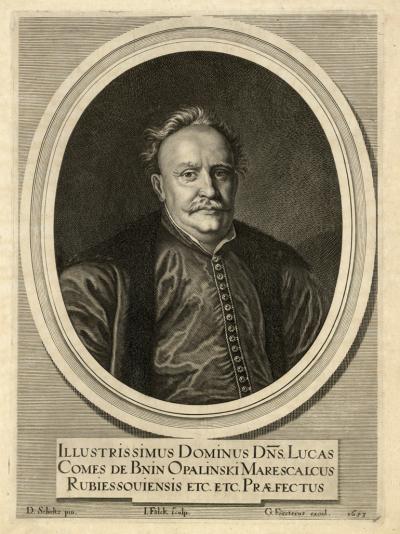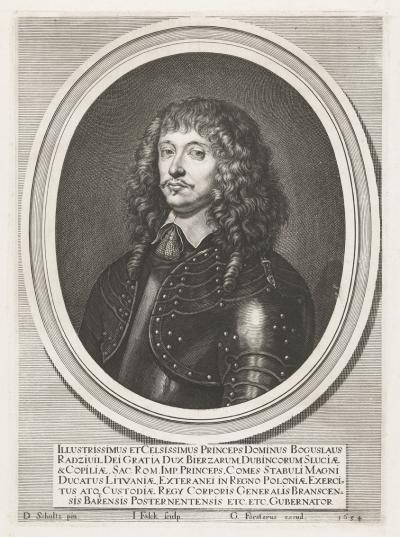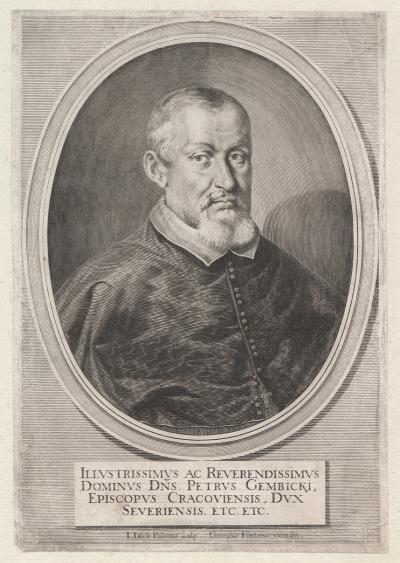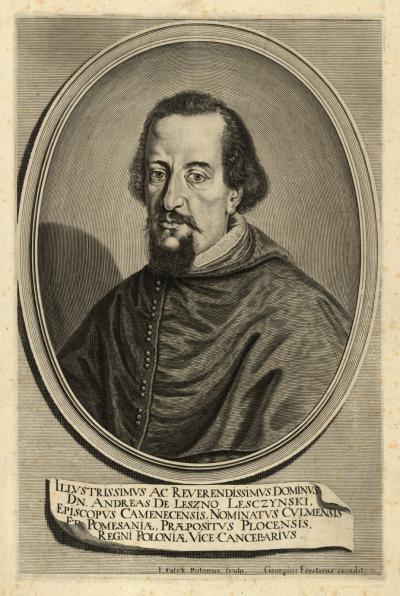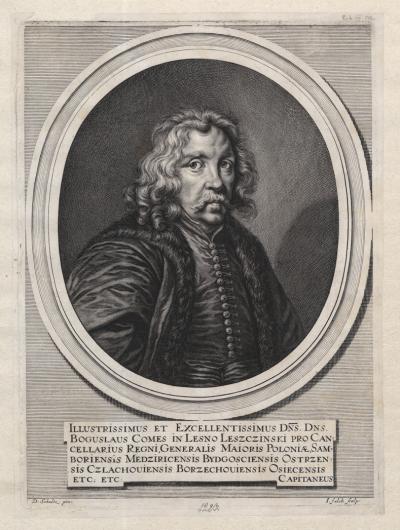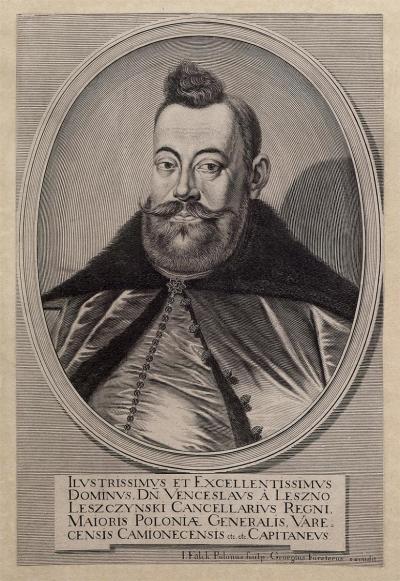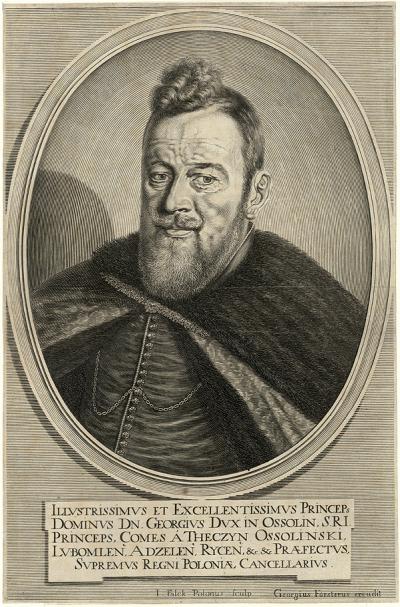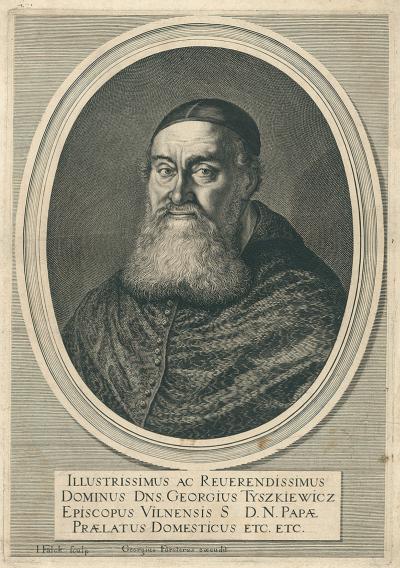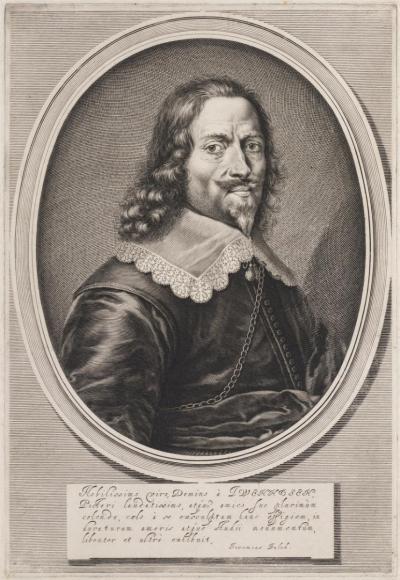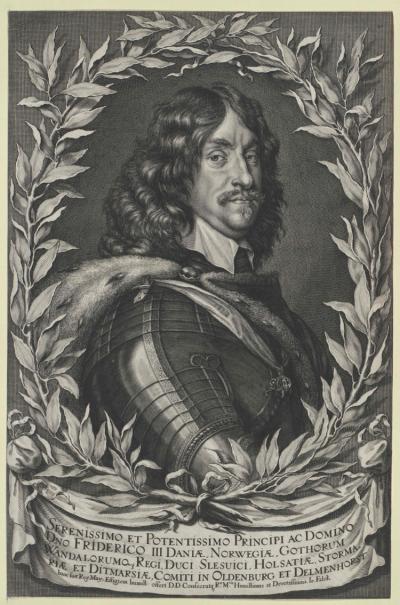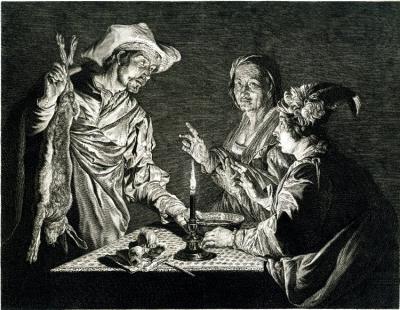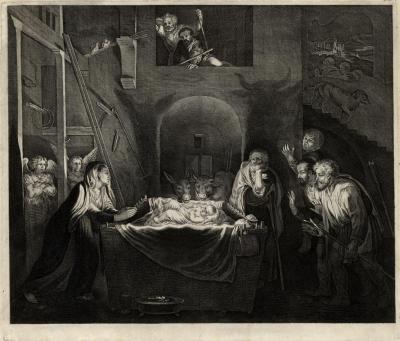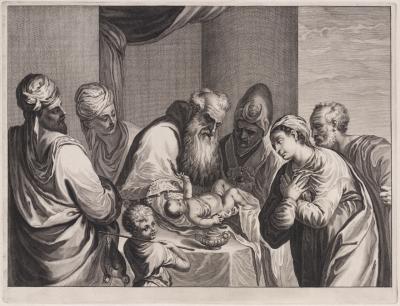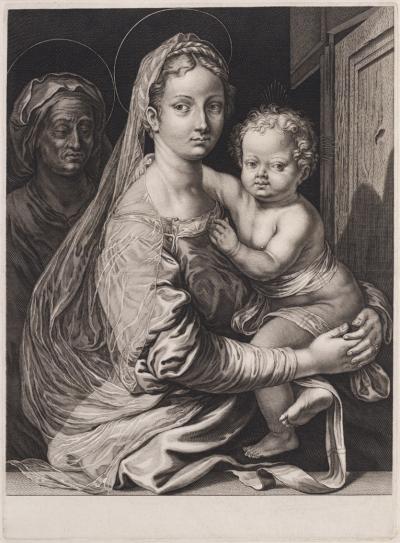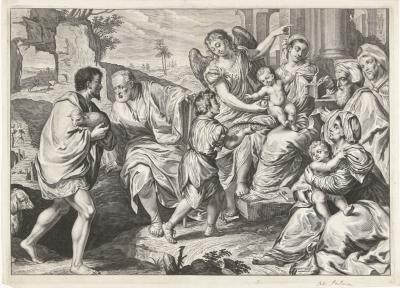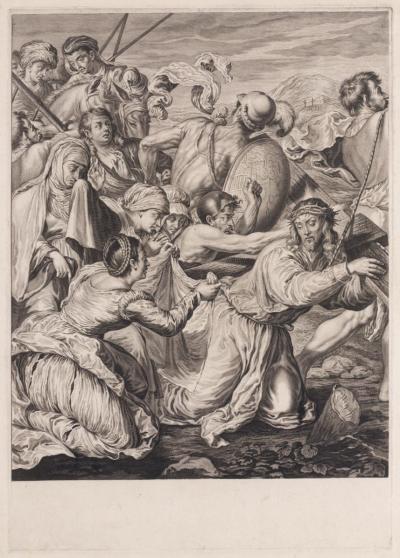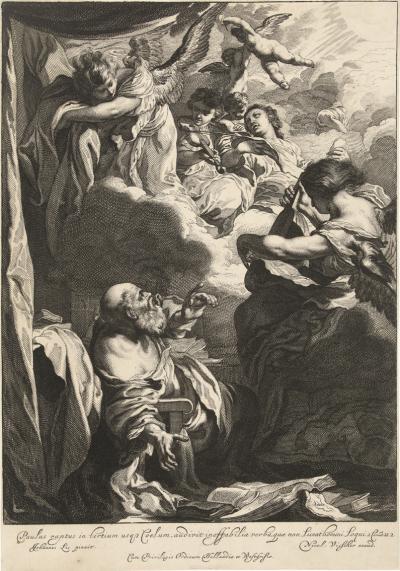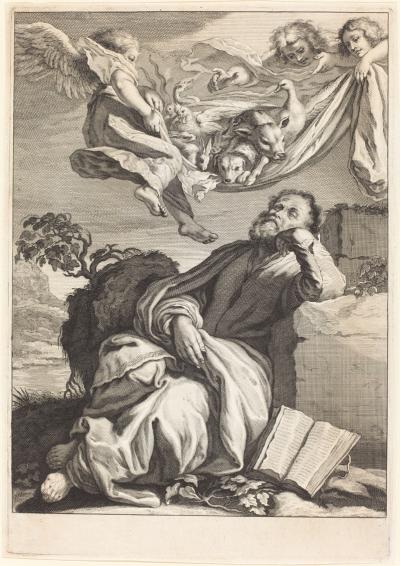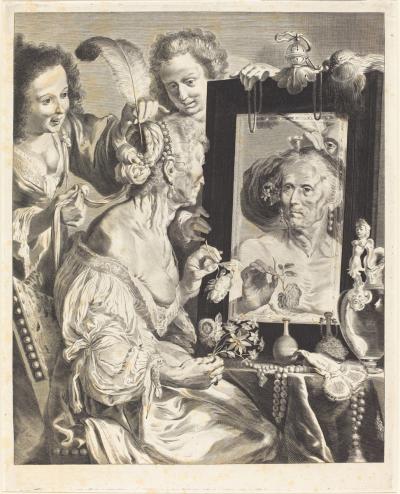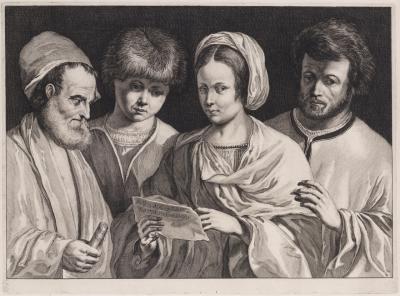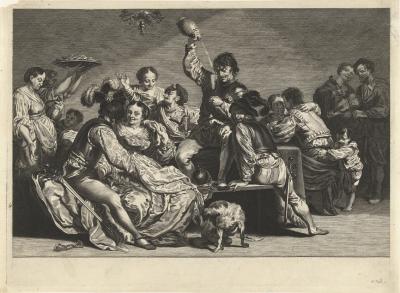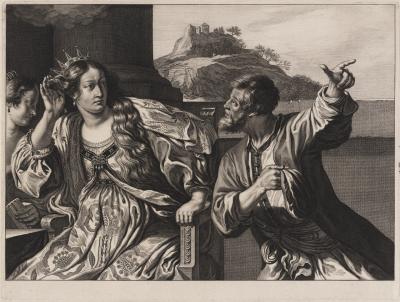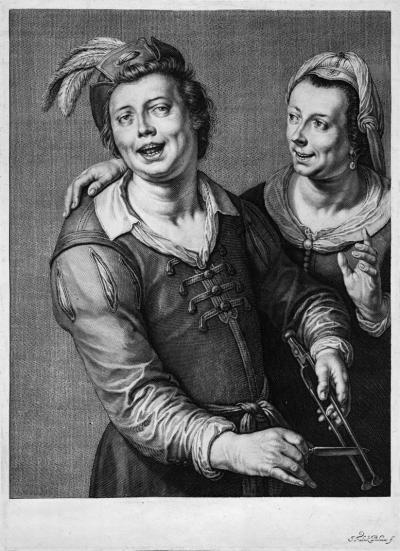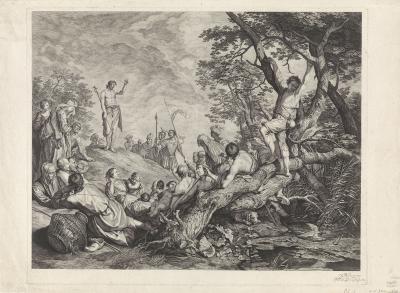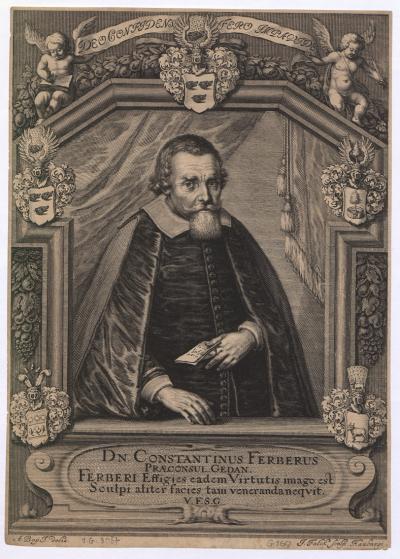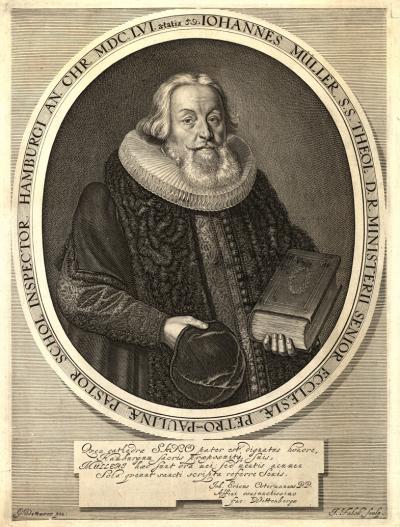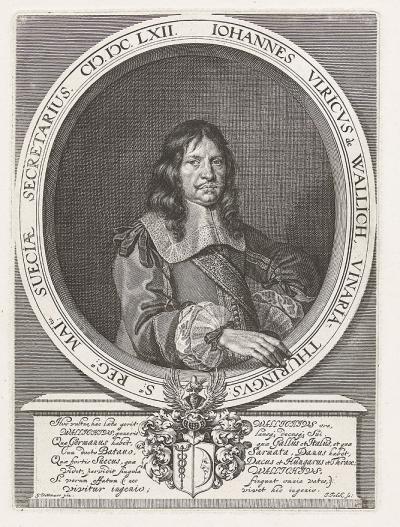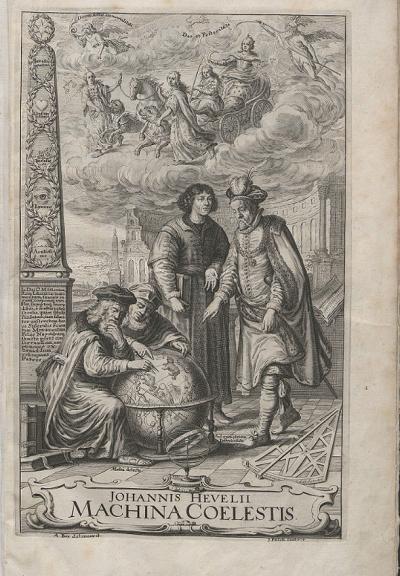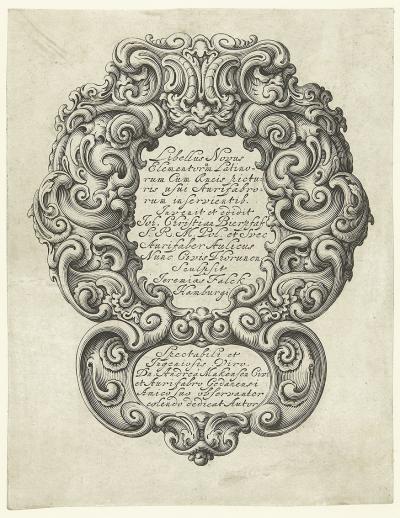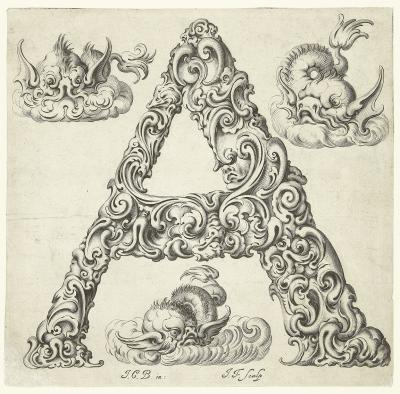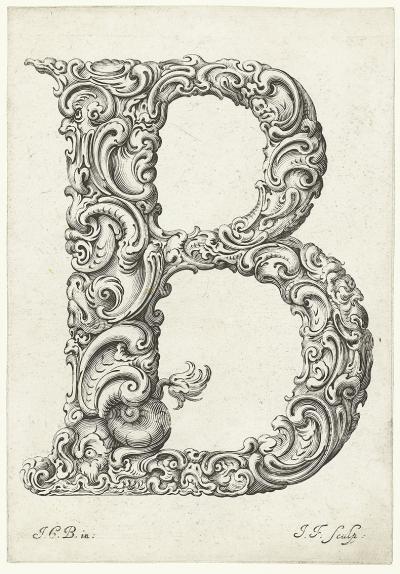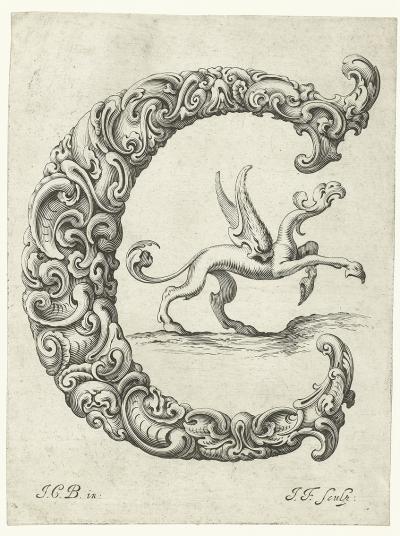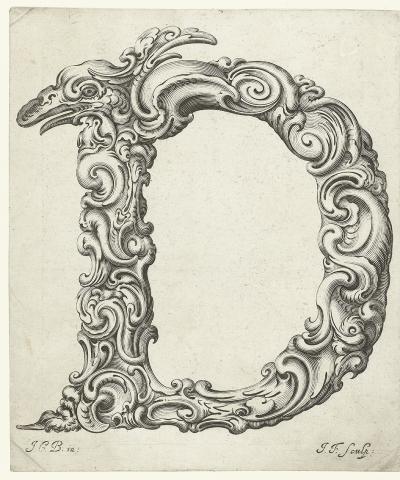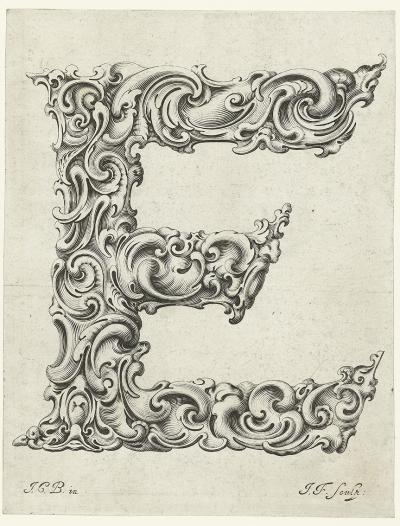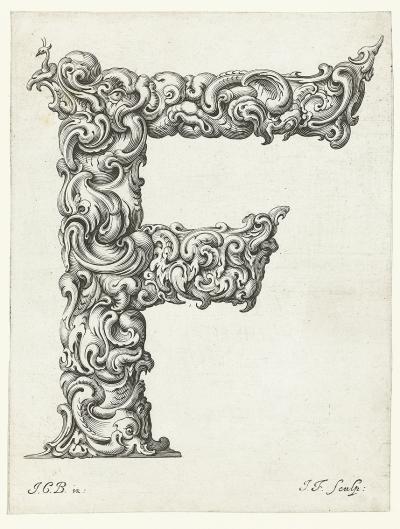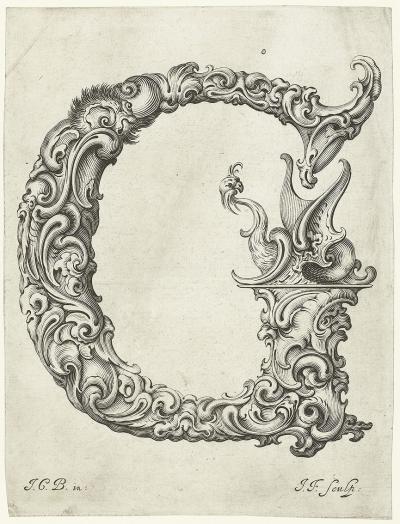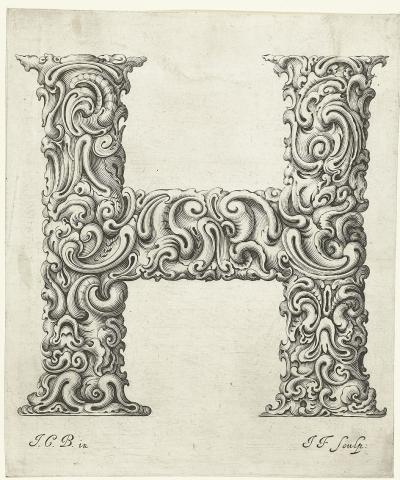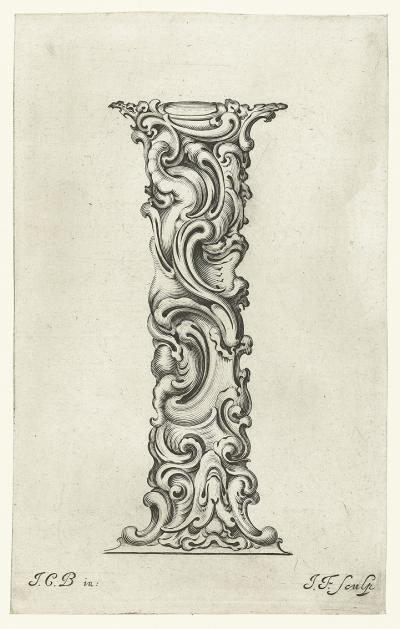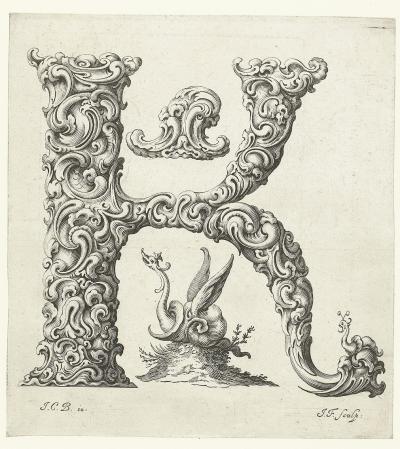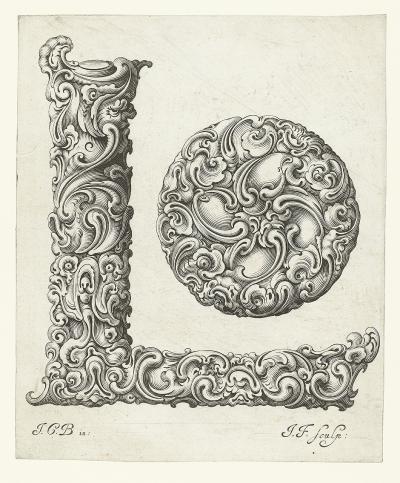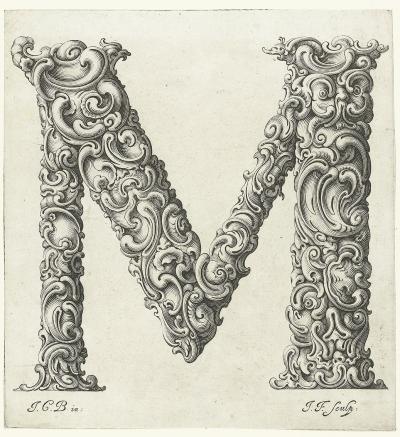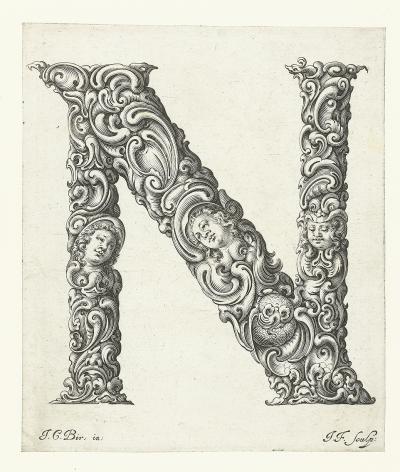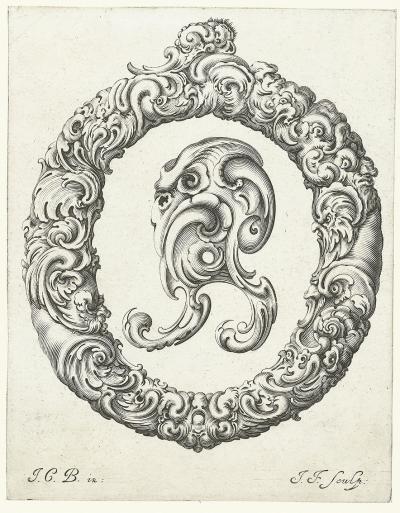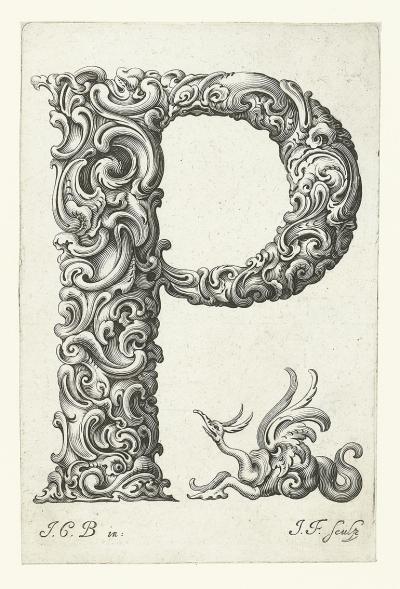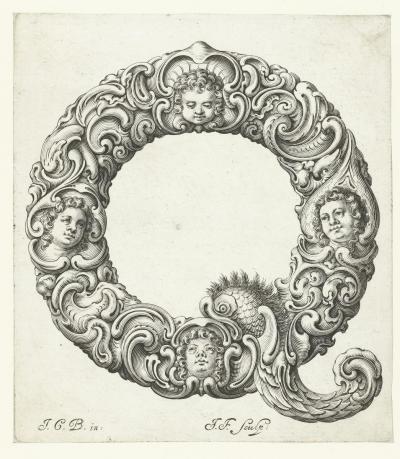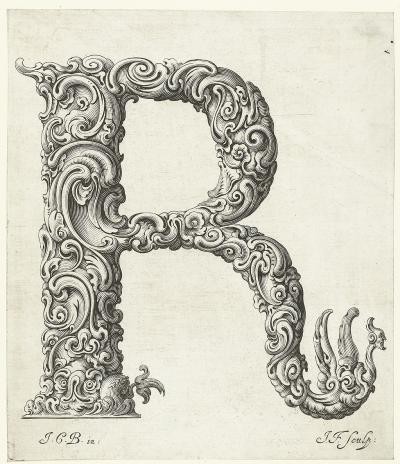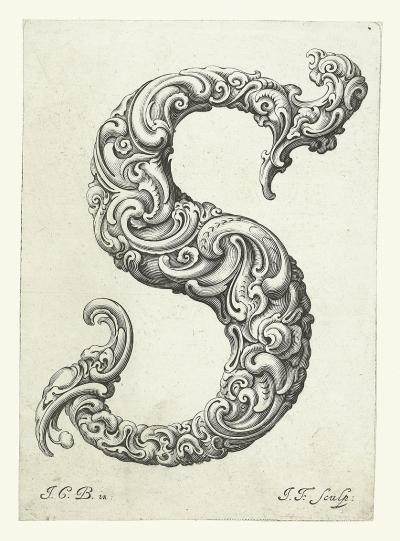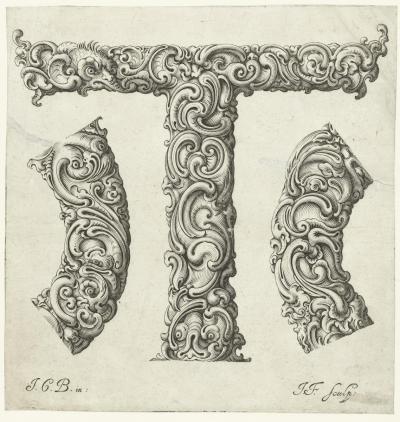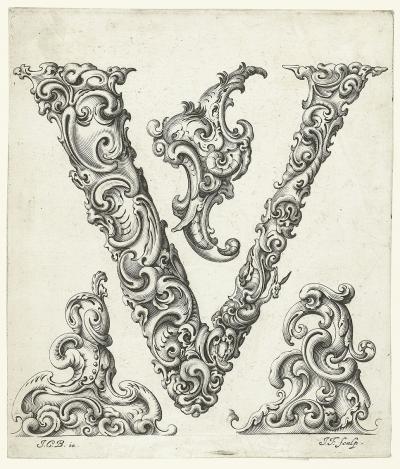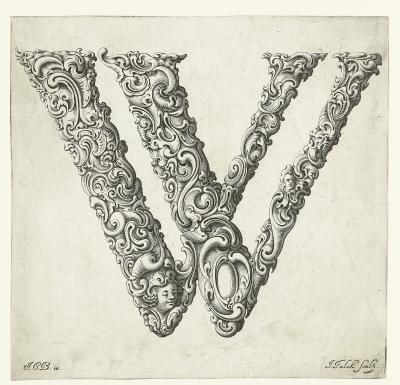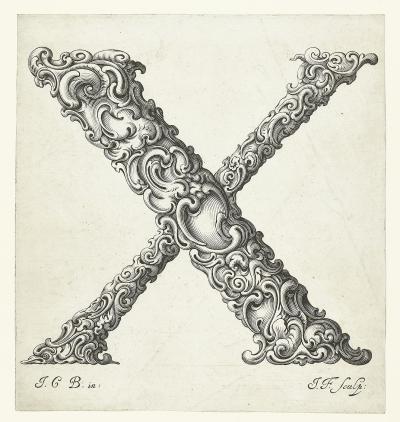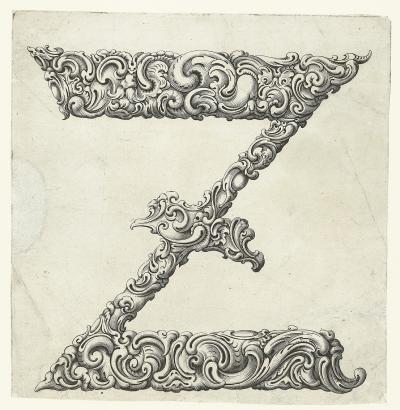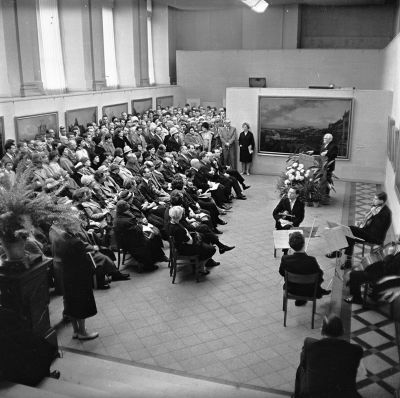Jeremias Falck
Mediathek Sorted

In 1649 Falck made some engravings at the Swedish court in Stockholm, based on paintings by the Dutch artist David Beck (1621-1656), whom Queen Christina (1626-1689) had appointed as her court painter two years previously. Some of these are portraits of the Queen herself (Block 222, 223, Ill. 38), alongside others of Carl Gustav Pfalzgraf bei Rhein (later King Karl X Gustav, 1622-1660), who had been named as the successor to the Swedish throne in 1649 (Block 216, 217, Ill. 39),[8] the Swedish statesman and Field Marshal, Magnus Gabriel De la Gardie (1622-1686), the chief of the Queen’s bodyguard, brother-in-law to Carl Gustav and general governor of Livonia (Block 240, Ill. 40); the Dutch merchant and entrepreneur, Louis de Geer (1587-1652), who had been living in Sweden since 1627 and was working for the Swedish Crown (Block 242, Ill. 41); and the Swedish Field Marshal, Lennart Torstensson Graf von Ortala (1603-1651), who had been the general governor of the Western provinces in the country since 1648 (Block 284, Ill. 42). Falck ran a copperplate printing press that was based in the Castle, and published his own engravings. In 1650 Queen Christina appointed him as the court engraver. This made him a civil servant and gave him an annual salary of 6000 Reichstalers. (Block, PDF, S. 9). From then on he signed the text on his engravings with an additional designation “S.R.M. Sveciae Chalcographus”. He regularly travelled to Danzig in order to take on portrait commissions. His daughter Anna Magdalena was born on 3 January 1653 and baptised in Stockholm. When Queen Christina abdicated in 1654, leaving the Swedish crown to her cousin, Karl X Gustav, Falck lost his post and returned to Danzig.
During his years in Stockholm he completed further engravings based on portraits painted mostly by Beck: the majority of them showed Swedish officers and commanders from the Nordic Wars and the Thirty Years War. These included, in 1650, a portrait of the Swedish Imperial Admiral and Imperial Treasurer, Gabriel Bengtsson Oxenstierna von Korsholm und Wasa (1586-1656, Block 273, Ill. 43); in 1651; portraits of Robert Earl Douglas (1611-1662), a Swedish military commander (Block 231, Ill. 44), Friedrich Christoph von Hammerstein (1608-1685), the Swedish Master of the Watch (Block 244, Ill. 45), the Swedish commander Gustaf Karlsson Horn Graf von Björneborg (1592-1657. Block 246, Ill. 46), Hans Christoph Earl of Kingsmarck (1600-1663), a Swedish colonel who fought alongside Torstensson in Silesia and Saxony in 1643, and fought for Sweden in 1648 in the Electoral Palatinate, Lower Saxony, Westphalia, Franconia and Bohemia, after which (as Falck also noted) he was appointed to the post of Field Marshal and Earl of Westerwik and Stegholm (Block 250, Ill. 47),[9] Axel Lillie (1603-1662), a Swedish colonel who also fought alongside Torstensson, became Commander of Leipzig and Governor of the Margravate of Meißen in 1642 after the Battle of Breitenfeld, and was appointed by Queen Christina in 1651 as the ‘Earl of Lesstra and Skötrop (Block 255, Ill. 48); Arvid Wittenberg (1606-1657), the Earl of Debern and Neuburg, who had been a Major General in the Swedish army since 1639 and fought in Silesia and Pommerania (Block 292, Ill. 49). In 1652 Falck engraved a portrait of Axel Oxenstierna (1583-1654), who was made the Swedish Imperial Chancellor in1612, Governor of Riga in 1622 and Chancellor of the University of Uppsala in 1645 (Block 272, Ill. 50); in 1653 he completed another portrait of Queen Christina, a sheet whose existence was doubted by Block, a copy of which was later found in Teylers Museum in Haarlem (Block 224, Ill. 51). In 1654 he made another large-format splendid portrait of Carl Gustav, this time as the Swedish King Karl X Gustav, wearing a breastplate, with an ermine cloak in oval laurel wreaths wound around with oak branches (Block 218, Ill. 52): it is signed with the single word “Falck” because his post as court engraver had not be renewed by Karl; in 1655 he completed a portrait of the Swedish Field Marshal and Imperial Councillor, Carl Gustav Wrangel (1613–1676), based on a painting made in the Castle of Skokloster by the Hamburg artist, David Klöcker Ehrenstrahl (1629-1698),[10] who had arrived in Wrangel’s retinue in Stockholm in 1652. The large format engraving is signed for the first time with his full name “Jeremias Falck” (Block 295, Ill. 53).
[8] A portrait like painting of the Palatinate Duke Carl Gustav (Karl X. Gustav Pfalzgraf von Zweibrücken), completed around 1848 and attributed to David Beck, shows him in an identical costume but only half length. It can be found in the National Museum of Stockholm, http://collection.nationalmuseum.se/eMuseumPlus
[9] Falck also names Beck as the painter of the work on which he based his engraving. Nonetheless it should be noted that there are similarities in the pose and costume to a painting Matthäus Merian (1621-1687), also made in 1651 in the collections of Skokloster Slott, http://emuseumplus.lsh.se
[10] David Klöcker Ehrenstrahl: Karl Gustav Wrangel, 1652, oil on canvas, Skokloster Slott, Inv. Nr. 698, http://emuseumplus.lsh.se
















































































